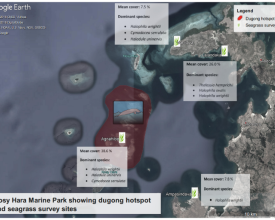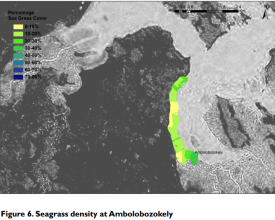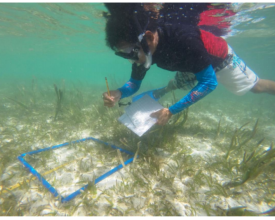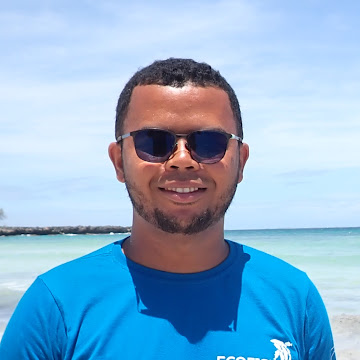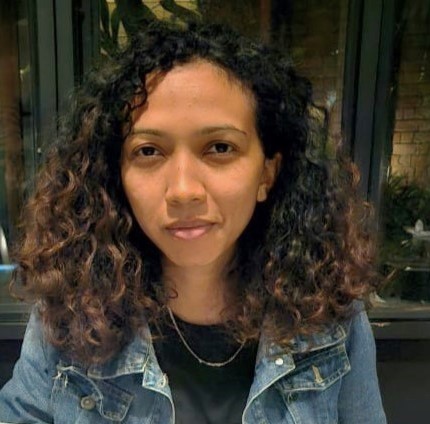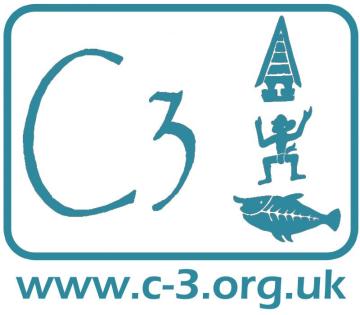
Community-driven seagrass protection and monitoring
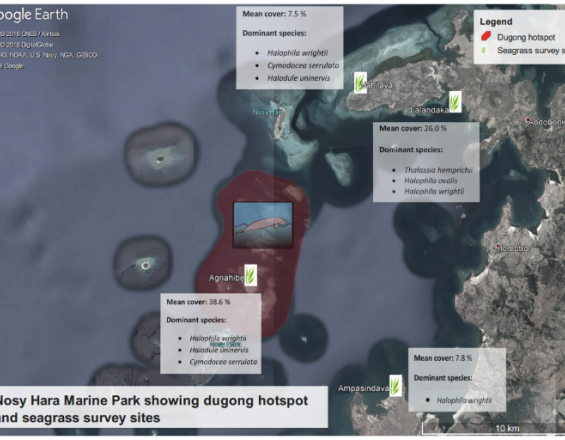
Conservation Centrée sur la Communauté (C3), is a Malagasy association focused on marine conservation, which started to operate in 2009 in the North of Madagascar. Our mission is to expand conservation efforts worldwide by building the capacity of individuals and local institutions through research and training initiatives.
C3 was the first NGO in Madagascar to introduce the internationally-standardised SeagrassWatch methodology and assisted other NGOs and government marine science agencies in technical capacity building. We combined seagrass data collection with key informant interviews on the presence and habitat utilisation of the endangered Dugongs and Green sea turtles in order to map hotspots for long-term monitoring and protection.
Our community stewardship approach has also led to the enforcement of gillnet bans in areas important for endangered species and community-based reporting on infractions and endangered species sightings.
Context
Challenges addressed
- Lack of data availability on seagrass in the area and country
- Lack of technical and financial means to conduct extensive mapping and monitoring of seagrass meadows
- Seagrass degradation occurring in the region due to the practice of destructive fishing methods (illegal fishing gears) and silting
- Lack of knowledge and awareness among coastal fishing communities on the importance of seagrass ecosystems
- Lack of access to sites offshore which are generally more pristine and significant (in relatively good condition and serve as a refuge for endangered marine species and a haven for healthy fisheries)
- Lack of local people's education beyond primary
- lack of access to appropriate boats, training etc.
- lack of resources for community patrolling
- lack of awareness among law enforcement and prosecution services regarding wildlife and fisheries law
Location
Process
Summary of the process
Seagrass mapping is challenging, because this ecosystem can’t be surveyed with satellite images or other similar devices. It is also often an ecosystem that is less known among coastal communities and the wider public. The fact that dugongs are still observed helped us a lot. We engaged fishermen in our survey based on their observations of this emblematic animal, instead of focusing only on seagrass. We obtained good results that allowed us to map approximately the seagrass meadows areas. It was easier then to go physically on site, to produce a more accurate map.
The seagrass monitoring was possible once we had the map. It is important to conduct an annual assessment of these seagrass beds, in order to monitor their condition and density.
In parallel, intensive outreach and education about seagrass, its value in the wider marine system and its relevance to the health of local fisheries, are conducted at schools and public events.
Building Blocks
Participatory approach
We conducted a qualitative survey among fishing communities living in the area by using incidental sighting reports and the CMS short version questionnaire. The questions touched mostly upon their observations of dugongs when at sea. We asked what behaviours they had when spotting (were they eating, resting, dead, alive, bycaught,…?)
The answers to the questionnaires allowed us to draw an approximative map of their main habitats.
During studies on sea turtles, we conducted key informant interviews (by using a questionnaire too) to identify turtle nesting and feeding areas. This also allowed us to identify potential and important areas of seagrass beds.
Enabling factors
- We have been working in the area for a long time, and have established trustful relationships with the fishing communities.
- Consultations with local communities have enabled us to discover traditional community practices on dugongs and their cultural significance. We produced a children's book about the dugong and sea turtle that shares informative information about the interaction between the species and its habitat.
- No dead or captured dugongs have been recorded for over 10 years in Nosy Hara since C3 began its interventions.
Lesson learned
Involving local communities in monitoring activities raises their awareness and involvement in resource conservation in general. Thanks to our community consultation, we identified one further hotspot we were unaware of previously.
Fishermen’s knowledge (especially the elders) is important information and gives an idea of the evolution or the level of change observed in the ecosystems.
GIS mapping of seagrass meadows
Based on the survey results, we went to the seagrass areas where fishermen said they had observed dugongs. We dived to verify that seagrass meadows were in the location, and we took GIS points, in order to produce a more precise map of the ecosystem.
Enabling factors
- Identification of hotspots for seagrass beds and dugongs
- Ground truthing by boat and snorkel
Lesson learned
It is important and necessary to have a baseline map of the initial state (for reference) of the meadows in order to observe their evolution.
Annual monitoring of the seagrass beds
We applied the Seagrass-Watch methodology, which consists in surveying seagrass beds with a quadrat, and help to assess the different species, their density and their health status
Results: For the sites surveyed, seagrass mean cover was from 7.5 % to 38.6%
Enabling factors
- Identification of dominant species
- identification of dominant species and their average coverage
Lesson learned
- Annual monitoring should be maintained in order to know the state of the meadows and in order to take necessary measures in case of important degradations
Impacts
- Map of seagrass hotspots with data on species, density
- Map of dugongs' feeding areas
- Database on seagrass state, with monitoring results
- Creation of Locally Managed Marine Areas, run by communities
- Appreciation and understanding about the role of seagrass (and megaherbivores) in the health of coastal ecosystems and fisheries
Beneficiaries
- Fishing communities from the Nosy Hara marine park, Antsiranana (all KBAs)
- Youth (primary, secondary, tertiary)
- Women associations
- community MPA management associations
- the police
